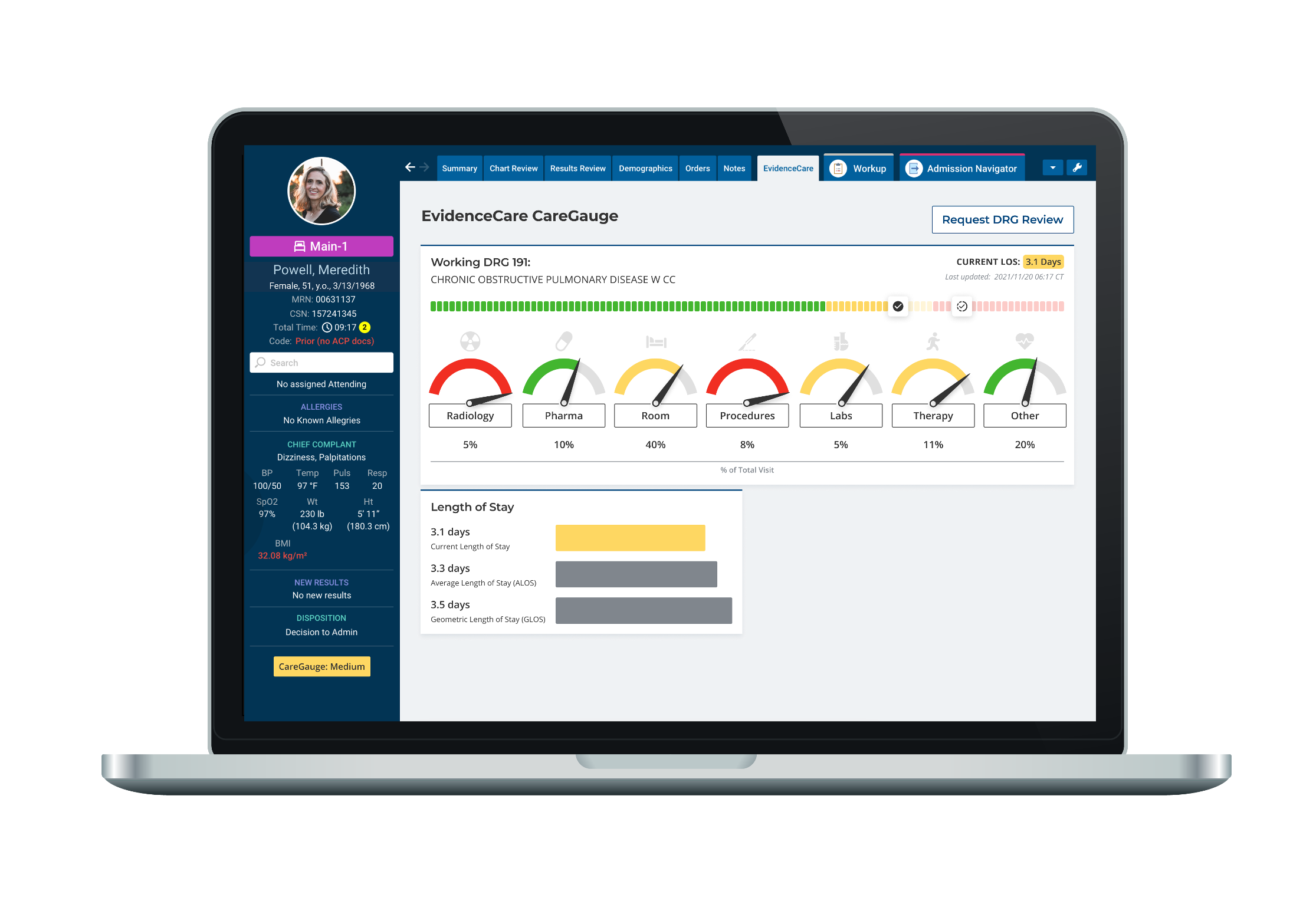Unwarranted Clinical Variation
Hospitals are pressured to deliver a high standard of care with increasingly small margins. Ensuring extraordinary care at a system-wide level is impacted by decisions made by both hospital operators and individual clinicians.
Anyone familiar with healthcare knows there can often be variation between physicians in patient care depending on the health facility and the doctor. Reducing unwarranted variation within healthcare should be a primary concern of any healthcare facility that prides itself on keeping a high standard of both medical treatment and operational practices.
What Is Variation in Healthcare?
Clinical variation gives varying levels of care to patients when physicians use alternative methods of medical treatment, including diagnosing the patient and new treatment methods. There are two types of clinical variation: warranted and unwarranted clinical variation.
The phenomenon of unwarranted clinical variation in healthcare is a problem that hospital leaders are desperate to solve. They are looking for innovative ways to reduce this occurrence and improve patient care and hospital margins. This article will discuss the many ways that unwarranted clinical variation can be reduced.
Unwarranted Variation Meaning
The official unwarranted clinical variation definition within the healthcare sector is medical service variation that cannot be explained by illness, medical need, or any other evidence-based reason. It is one of the leading causes of low-value care often ignored by healthcare regulators.
To really understand clinical variation, you must first know where it originates from, where it exists within the healthcare system, and how to prevent it. While no organization will completely eradicate variation from its organization, by understanding both warranted and unwarranted variation in healthcare, everyone will come a step closer to understanding the problem.
Warranted Vs. Unwarranted Variation
Medical professionals will always need to defer from regular medical practices for various reasons. But there is a need to educate the difference between warranted and unwarranted variation in medical practice.
Healthcare Variation
A certain amount of variation is a good thing, as every patient is unique and should be treated as such. There is no way for organizations to completely irradicate clinical variation, especially with the human factor involved. Still, there are ways to reduce the amount of variation in medical care that is wreaking havoc on the entire medical system.
Warranted Vs. Unwarranted Variation
Clinical variation is classified into warranted and unwarranted variation. Warranted variation in clinical care refers to any variation accepted within the healthcare system. In contrast, unwarranted variation in healthcare delivery cannot be explained by personal preference, medical need, or illness.
Unwarranted variation can originate from three different areas of the healthcare system:
-
- The overuse of treatments that do not provide the best medical results or no results at all
- The underuse of cost-effective treatments that warrant the same results as other, more expensive treatment plans
- Unjust level of care for low-income parts of the population that receive a reduced level of care due to their socioeconomic background
Potentially Avoidable Variance
Organizations like MCG – known for their evidence-based guidelines – have even created categories of variance focused on potentially avoidable variance. Software like EvidenceCare’s CareGauge was designed to reduce any potentially avoidable variance in real-time by giving physicians visibility into care utilization data compared to their health system peers directly in the EHR while treating patients.
Warranted Variation in Healthcare
Warranted variation in healthcare is either random and occurs by chance or is intentional due to a unique patient scenario. Healthcare professionals justify this type of variation as each patient is different and with an individual set of circumstances. Having a certain level of this variation within the health system shows that it is centered around the patients and their unique health needs.
This variation also occurs due to innovation in treatments and care that may turn into standard care in time. It shows progression and innovation throughout the medical profession.
Examples of Variation in Healthcare
Medical practitioners and healthcare facilities could give many examples of variation in healthcare, both warranted and unwarranted. Here are a few examples of variation happening at a high frequency in health facilities across the US:
-
- Patients respond differently to identical courses of treatment due to their unique physiological makeup.
- Two doctors prescribe two different treatments to a nearly identical patient when both treatments could be equally effective or impactful.
- A doctor prefers one diagnostic method over another due to personal experiences.
- A doctor ignores accepted prescription guidelines because they know a patient has had adverse reactions to similar medications in the past.
- A practitioner increases or decreases the schedule of a certain therapy over a few weeks to accommodate the patient’s work schedule.
- A patient expresses a preference for a certain type of diagnostic method.
Variation in Medical Practice
While it is normal for every healthcare facility to deal with a high level of variation in daily practice, it should be reduced or eradicated so that health outcomes can be improved overall.
Many healthcare facilities practice variation in healthcare for the safety of their patients. Here is one warranted clinical variation example:
Two patients entering a hospital with pneumonia. One patient has a medical history of renal failure, while the other has no significant medical history. The medical doctor will treat these patients differently, even though they both have pneumonia.
This type of variation is warranted when the patient’s care is the number one focus. Problems occur when unwarranted variation starts to increase more often than warranted.
Unwarranted Variation in Healthcare
Unwarranted variation in healthcare can be a result of substandard care, outdate practices, or even overworked physicians. There are many unwarranted variations in healthcare as doctors deal with high levels of patients, long waiting lists, lack of supplies, and ineffective treatment plans.
Some of the unwarranted variation in healthcare examples include:
-
- Ordering a CMP (comprehensive metabolic panel) daily when there is no reason to check liver function daily and when a BMP (basic metabolic panel) would suffice. This creates increased cost to the patient.
- Ordering a BNP (b-Naturetic peptide) to determine improvement in heart failure, when a simple physical examination would give better information. This would make extra “pokes” for the patient and adds unnecessary additional cost.
- Placing patients on oxygen in the ED without a specific indication or in the Operating room (pain meds on board or patient is hyperventilating but does not “require” oxygen). This increases utilization of resources and cost of care and can also increase LOS (length of stay) if the patient is thought to have needed the oxygen, and it takes time to rule out if the patient actually has medical necessity.
These are excellent examples of unwarranted variation as it is unrelated to patient-based factors and gives no real benefit to the patient and their course of treatment.
What Type of Unwarranted Variation Is Supply-Sensitive Care?
While unwarranted variation can be ineffective or unnecessary treatments for patients, it can also be costly for the hospital. Supply-sensitive care such as doctor visits, diagnostic tests, drugs, and hospital admissions that are not necessary do not help the patient and cost the health system money. Patients could be treated in a different manner that could be more effective without the overuse of resources.
How To Reduce Clinical Variation
Clinical Variation in Healthcare
Clinical variation in healthcare drives poor patient care and wasted costs. Standardizing patient care is challenging as most healthcare contains inefficient workflows and isolated teams. Since the pandemic, there has been a greater need for efficient and consistent solutions that give patients a better experience overall.
How Does Variation Impact Patient Care?
Clinical variation can have a significant impact on patient care. It causes inconsistencies with workflows and processes, leading to staff shortages and burnout. Patients do not receive the highest level of care due to fatigued and stressed doctors and a failing system.
In turn, this may lead to patients not coming to a hospital to receive treatment on an ailment and their condition deteriorating. Also, variation can result in the use of defensive medicine, which will drive up costs and ultimately not increase the health of patients overall.
When doctors receive consolidated and peer-compared clinical information in real-time, they can implement the best practices and standardized care on a regular basis. It relieves the burden of deciding and implementing the best course of treatment on the spot based on minimal information.
Reducing Variation Meaning
Reducing variation in healthcare involves setting a core level of care so that all healthcare facilities can treat patients effectively. The goal is to standardize healthcare throughout a health system so that every patient receives the same level of care regardless of where and by whom they are treated.
There are many benefits to reducing variation in healthcare facilities, including:
-
- Patients receiving better care
- Using financial budgets more wisely
- Diagnostics and treatments are more standardized, which can increase knowledge and performance among a larger number of staff. A software platform such as EvidenceCare would be excellent for creating this knowledge base.
There are many ways that a healthcare facility can reduce clinical variation. In our modern society, technology is implemented in every area of our lives. It is an excellent way to resolve and reduce clinical variation. Implementing clinical variance software will streamline workflows and provide a patient with the best course of treatment.
Clinical Variance Software
Clinical variance reduction software is an innovative and efficient way to quickly reduce variation in any healthcare system. It will help hospitals and providers commit to delivering the best care to every patient.
Clinical variance software helps hospitals:
-
- Implement the best care for patients, thus ensuring high patient safety. Hospital leadership and individual physicians will be able to see the variance of how doctors prescribe specific treatments
- Increase the efficiency of its workforce as healthcare professionals can combine any decisions they make concerning diagnostics and treatment with a standardized system
- Remain flexible in the care they provide. As most clinical variance software has a wealth of information within its database, it provides medical professionals with a broader range of clinical knowledge and evidence-based care
On an executive level, care variation software consolidates numerous data streams so that top management can identify and address any variation in healthcare. From this data, they will be able to refine quality, reduce costs, and improve the overall safety of patients, which are on the priority list of every hospital.
While clinical variation is a problem embedded in every area of the healthcare system, several solutions can be put in place quickly and have a rapid effect. To reduce clinical variation, clinical variance software is a solution that:
-
- Can be integrated easily into an EHR system
- Provides real-time feedback to physicians
- Protects quality patient care
- Improves hospital margins by reducing waste
To reduce unwarranted variation and be on the road to efficient and effective clinical treatment, CareGauge by EvidenceCare will elevate your care delivery and improve clinical workflow and treatments. Some of the key benefits of using CareGauge include:
-
- Deep analytics and insights: CareGauge analyzes massive amounts of hospital-specific and peer-compared data to uncover variations in costs, length of stay, quality, utilization, and more.
- Personalized, data-driven recommendations: CareGauge provides customized recommendations and insight for each patient and diagnosis-related group (DRG) based on their specific opportunities for improvement.
- Easy optimization: CareGauge integrates into EHR systems such as Epic, Cerner, and MEDITECH to facilitate the implementation of real-time recommendations and help reshape practices in a simple, streamlined way.
- Measurable savings: On average, CareGauge hospitals achieve $325 of savings per discharge or more through reduced unwarranted variation.
- Improved outcomes: By standardizing high-value best practices, CareGauge helps ensure all patients receive the most effective, evidence-based care possible, leading to better outcomes, experiences, and quality metrics.
Interested in learning how CareGauge could make a difference at your hospital? Schedule a demo today.










